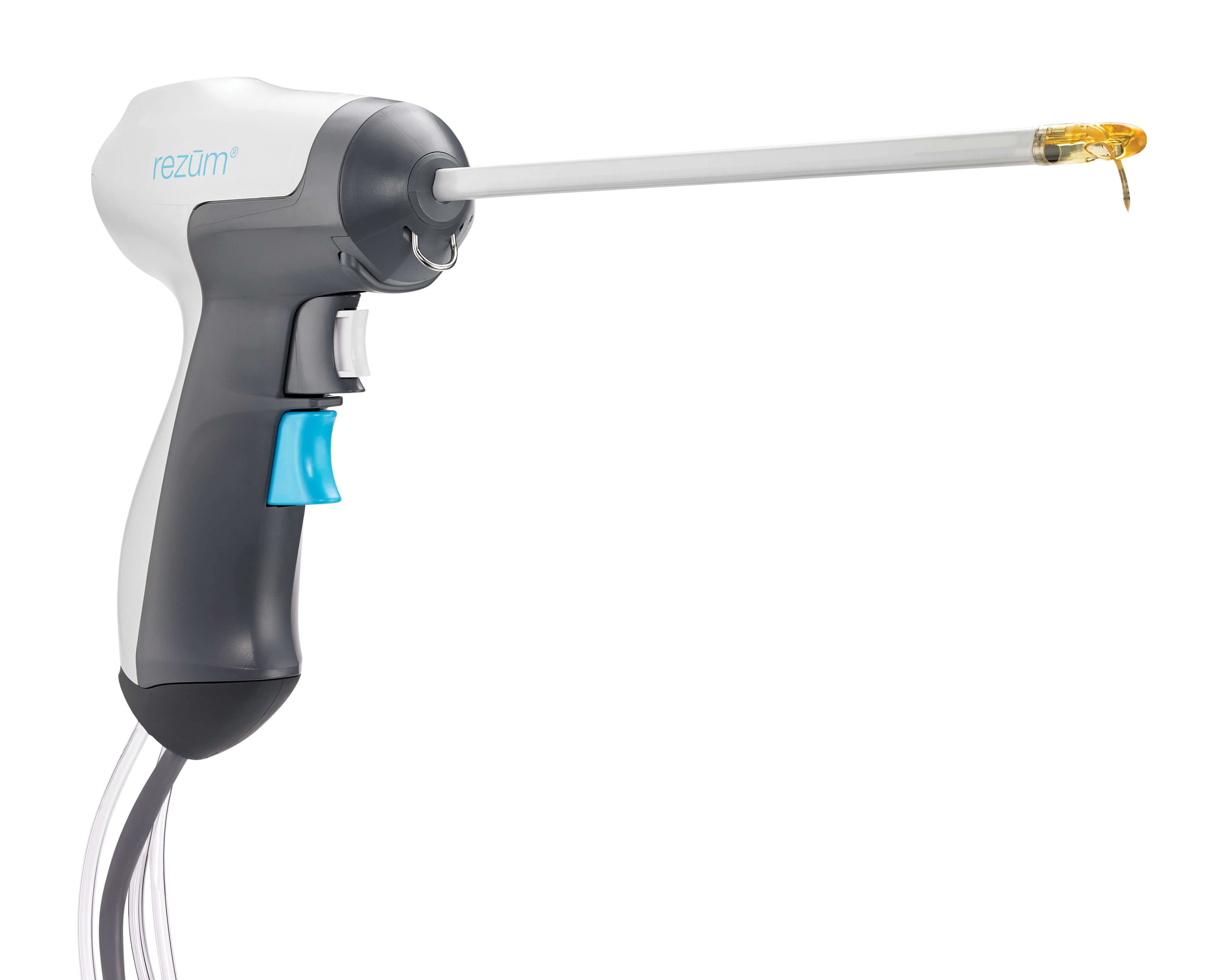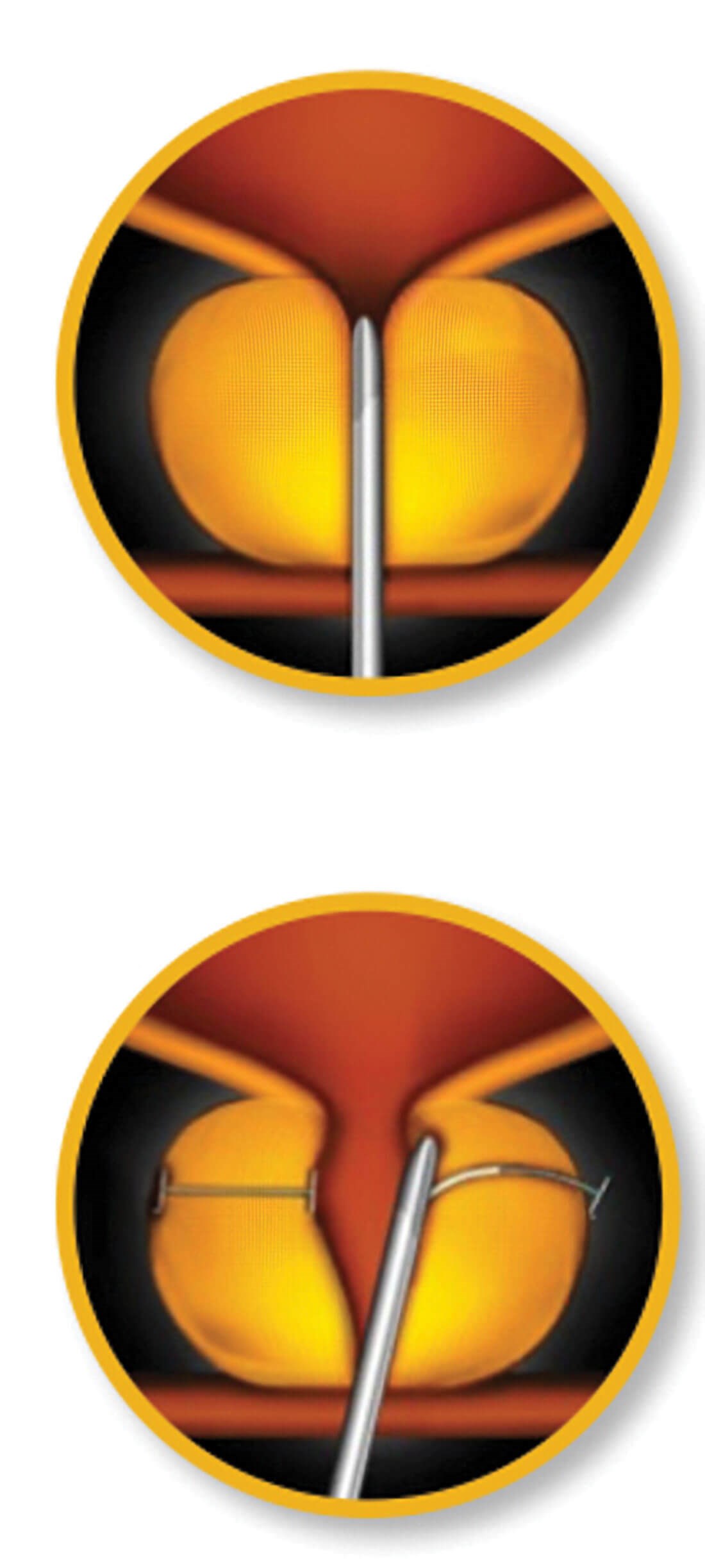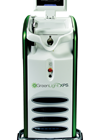Case study
A 70-year-old, generally fit and well male attends your outpatient clinic. He has experienced a gradual deterioration in his voiding over the last few months. Specifically, he reports hesitancy, poor flow and nocturia. He denies visible haematuria. His prostate specific antigen (PSA) is within normal limits. International Prostate Symptom Score (IPSS) is 21+5. Examination reveals a benign feeling prostate gland. Post-void residual is 80ml.
The patient has had a prostate volume measurement which is 75ml. The patient has been on tamsulosin and finasteride for several years, and this had previously controlled his symptoms well. The patient is now experiencing significant impact on his quality of life due to his voiding symptoms. He is keen to explore surgical management options for obstruction secondary to an enlarged prostate.

Figure 1: Image courtesy of Boston Scientific Corporation.
© 2023 Boston Scientific Corporation. All rights reserved.

Figure 2: Image courtesy of Teleflex Incorporated.
© 2023 Teleflex Incorporated. All rights reserved.
- What is the device shown in Figure 1? What is the mechanism of this form of treatment for lower urinary tract symptoms (LUTS)?
- Which patients is this therapy suitable for? What are some of the advantages of it?
- What is the main difference between bipolar transurethral resection of the prostate (TURP) and monopolar TURP? What impact might this have for the patient?
- What technology for treatment of LUTS does Figure 2 depict?
- Which patients are suitable for this treatment? What are some of the advantages of it?
- Are these implants MRI compatible?
- Can you name any other surgical procedures for management of LUTS and briefly outline how they work?
Answers
- This is a Rezūm™ delivery device. This is a therapy that involves transurethral injection of steam directly into prostatic tissue. This results in transfer of thermal energy which results in prostatic cell death. The energy transfers across prostatic tissue but is contained within the ‘zones’ of the prostate due to the energy transfer not being able to take place across collagenised membranes [1-3].
- Rezūm is suitable for treating men with moderate to severe LUTS according to their IPSS with a prostate volume of 30cc-80cc. It is effective in patients with enlarged median lobes. It can be performed under local anaesthetic and is a short procedure; this makes it an accessible intervention to those who may be otherwise unfit for an anaesthetic. There is no de novo sexual dysfunction associated with the therapy [2,3].
- Bipolar TURP allows current to flow between two electrodes contained within the components of the resecting instrument whereas in traditional monopolar TURP the current is carried from the cutting loop through the patient into a grounding pad electrode. For this reason, bipolar TURP permits resection within a saline irrigation medium rather than glycine. Use of a more physiological irrigation fluid reduces the risk from systemic absorption and therefore risk of TUR syndrome. Bipolar technology also allows improved coagulation properties which further reduces the risk of irrigation fluid absorption and also of bleeding. This leads to safer, longer resection times with fewer complications related to postoperative bleeding. This facilitates resection of larger prostate glands than was safely possible with monopolar TURP. The outcome for management of LUTS is not significantly different between bipolar and monopolar TURP and neither is the rate of associated sexual dysfunction. Traditional resection also allows evaluation of tissue for histological purposes [4].
- This figure depicts UroLift® technology. UroLift implants are transurethrally inserted either under local or general anaesthetic. These compress the lateral lobes of the prostate leading to increased urethral calibre [5-7].
- Patients with LUTS and prostate volume 30cc to 80cc. It is a minimally invasive treatment that can be delivered under both local and general anaesthetic, again making it an accessible form of treatment for those who would otherwise be unable to undergo an anaesthetic or alternative surgical procedure. There is no reported de novo sexual dysfunction reported with Urolift [6,7].
- The UroLift implants are MRI conditional. This means patients can undergo some MRI scans under certain conditions. Patients are provided with an MRI implant card [5].
- Endoscopic procedures
Green light laser (also known as photoselective laser therapy):
A transurethral approach deploying a potassium-titanyl-phosphate (KTP) laser which emits light with a wavelength in the green electromagnetic spectrum. It employs a shorter wavelength than ND:YAG lasers and allows more efficient vaporisation and ablation of prostate tissue with rapid coagulation. No tissue is preserved [8].
Holmium laser enucleation of the prostate (HoLEP):
Transurethral laser (Holmium:YAG) dissection of the prostatic lobes from the capsule followed by subsequent morcellation of the prostate tissue and extraction of fragments [9].
Open procedures
Open prostatectomy:
An open surgical approach to dissect and remove the prostate is rarely now undertaken but may be offered when a very large prostate volume precludes other approaches. It carries considerable surgical and perioperative morbidity and is not surprisingly becoming less favourable with newer technological advances using techniques such as HoLEP [10].
Radiological procedures
Prostatic artery embolisation:
Super-selective catheterisation and embolisation of small prostatic arteries accessed via the femoral vessels [11].
References
1. Rezūm Water Vapor Therapy.
https://www.bostonscientific.com/
en-US/products/lithotripsy/rezum-water
-vapor-therapy/healthcare-professionals
-resources/media-kit-templates.html.
2. Westwood J, Geraghty R, Jones P, et al. Rezum: a new transurethral water vapour therapy for benign prostatic hyperplasia. Ther Adv Urol 2018;10(11):327‑33.
3. McVary KT, Rogers T, Roehrborn CG. Rezum water vapor thermal therapy for lower urinary tract symptoms associated with benign prostatic hyperplasia: 4-year results from randomized controlled study. Urology 2019;126:171-9.
4. Alexander CE, Scullion MM, Omar MI, et al. Bipolar versus monopolar transurethral resection of the prostate for lower urinary tract symptoms secondary to benign prostatic obstruction. Cochrane Database Syst Rev 2019;12(12):CD009629.
5. UroLift System – Patient Information.
https://teleflex.com/anz/en/services/
patient-info/documents/Urolift/
L00237-01%20Rev%20A,%20Patient%
20Information%20Website%20Content,
%20UL400%20(English).pdf
6. NICE. UroLift for treating lower urinary tract symptoms of benign prostatic hyperplasia. 2021.
https://www.nice.org.uk/guidance/mtg58/
resources/urolift-for-treating-lower-urinary
-tract-symptoms-of-benign-prostatic
-hyperplasia-pdf-64372122962629
7. Page T, Veeratterapillay R, Keltie K, et al. Prostatic urethral lift (UroLift): a real-world analysis of outcomes using hospital episodes statistics. BMC Urol 2021;21(1):55.
8. Bachmann A, Ruszat R. The KTP (greenlight) laser-principles and experiences. Minim Invasive Ther Allied Technol 2007;16(1):5-10.
9. Kuo RL, Paterson RF, Kim SC, et al. Holmium laser enucleation of the prostate (holep): a technical update. World J Surg Oncol 2003;1(1):6.
10. Ferretti M, Phillips J. Prostatectomy for benign prostate disease: open, laparoscopic and robotic techniques. Can J Urol 2015;22 Suppl 1:60-6.
11. NICE Guidance - Prostate artery embolisation for lower urinary tract symptoms caused by benign prostatic hyperplasia: ©NICE (2018) Prostate artery embolisation for lower urinary tract symptoms caused by benign prostatic hyperplasia. BJU Int 2018;122(1):11-12.
[all links last accessed November 2023]









